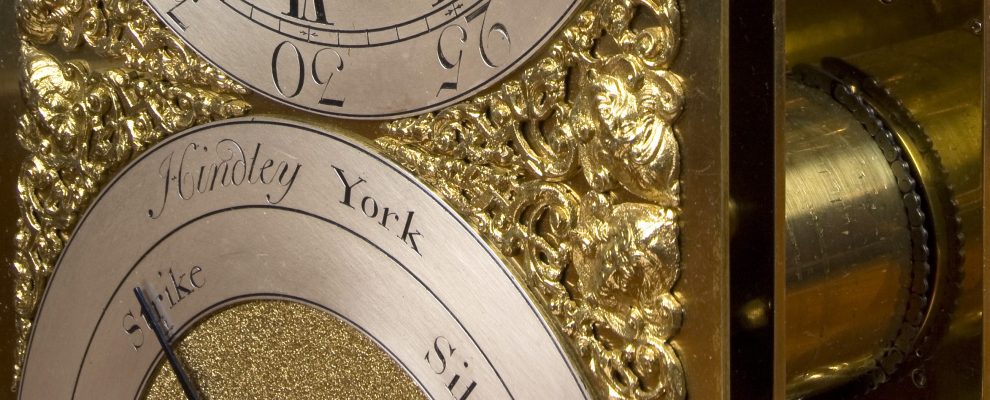With its numerous churches and public buildings, the telling of the time must have been highly visible and audible throughout the city of York. This is illustrated by contemporary accounts such as those of Anne Lister, a Yorkshire gentlewoman and landowner who kept a remarkable diary between 1817 and 1826. When Anne travelled by coach between York and her home at Shibden Hall near Halifax, her journey was regulated by time, and it was through audible rather than visual means – the tolling of the Minster bell – that that she was able to tell the hour:
December 19th 1817 … Just got to the Black Swan in time. Took my seat in the True Blue heavy coach & drove off for Leeds as the Minster clock struck 2 … a rainy afternoon. We reached Leeds and stopped at the Golden Lion at ½ past 6 … to the Rose & Crown in Briggate … I could not secure a place in the Mail till 4 in the morning.
It is hardly surprising that clock-makers were attracted to eighteenth-century York, as a centre for Northern polite society, to meet the ever-growing demand for accurate timekeeping and fine timepieces; nor that many skilled clock-makers diversified into the production of scientific instruments. A great many clockmakers came to York to set up business, often moving as whole families, for clockmaking was commonly a family business. The Storr family, who migrated from Beverley to York, and the Agar dynasty (see entrance hallway) are notable examples. Indeed, the city quickly developed a reputation as the second home of good quality, highly accurate and beautiful timepieces after London. Some York clockmakers came to be regarded as some of the very finest and most skilled provincial producers of instruments of time and science in the country.
(From Keeping Time a temporary exhibition at Fairfax House, 5th October-31st December 2012)

Name: Hannah Phillip
Title: Director
Source: Keepig Time (Fairfax House, 2013)
